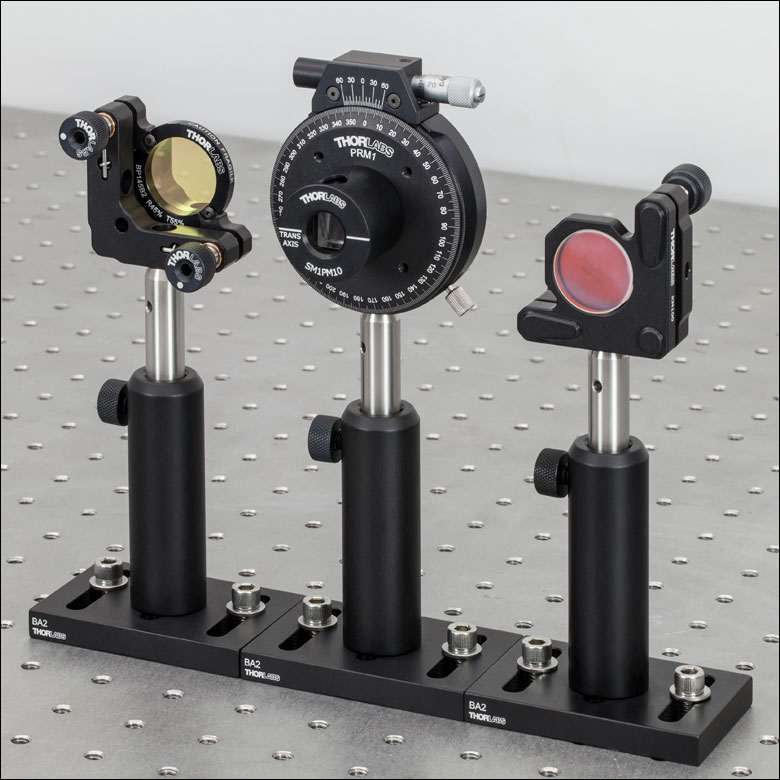
Above we see the full optomechanical system. From top to bottom we have the optical devices, mounts, optical posts, holders, and bases. Courtesy of Thorlabs.
Introduction to Mounting Systems
Every piece of an optical setup is vital. Every optical component requires an optomechanical system to hold, aim, and adjust the device. The most basic system includes a mount, a post, a post holder, and a base. A recent article covered key factors in choosing the correct mount for individual purposes, but today we examine the post and post holder. These two components are essential for height adjustment and optical display. Choosing the correct optical post and holder for your application is ultimately determined by two factors: the experimental environment and the desired adjustability.
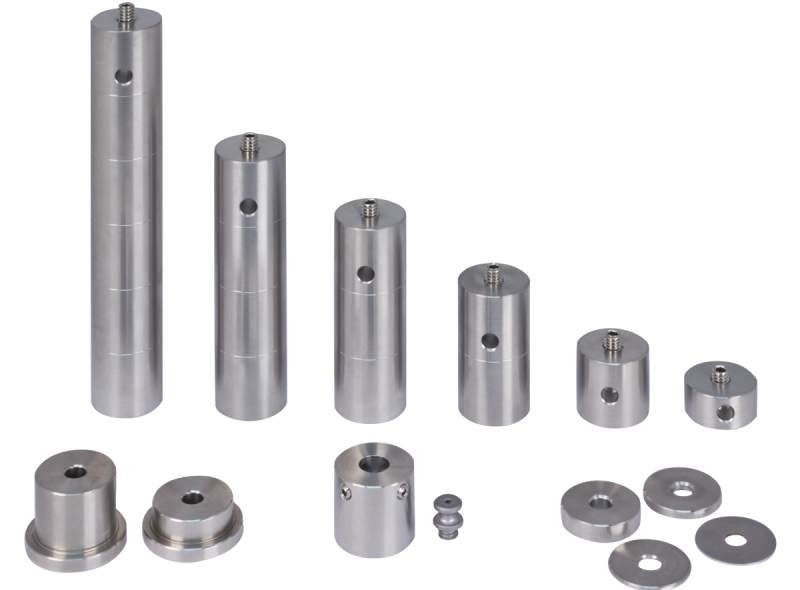
Optical posts come in many different sizes to accommodate a wide variety of applications. Courtesy of Newport.
Optical Posts
Standard Posts
Optical posts are a quintessential building block for any optical table. These posts support the mount and device, and can also be used to build and construct more complex optomechanical assemblies. They come in a wide variety of diameters, lengths, and materials to best fit any application or experiment. Standard posts are stainless steel, and many manufacturers offer a vacuum-compatible variation. These pieces are cleaned and ready to be placed in vacuum chambers directly out of package. Many manufacturers also offer non-magnetic optical posts made of aluminum with an anodized hard coat to reduce reflectivity.
Specialty Posts
Specialty posts are also available for a wide variety of applications. These posts include variations in post top shape, translation method, and hole placement so that the user can construct their custom system more easily. Vertical translation posts, for example, have an adjustment ring and setscrews for height adjustment without the need for an additional optical setup. Researchers also often use posts with multiple tapped holes to construct more complicated mounting systems. These are popular in cage mounting systems and telescoping systems.
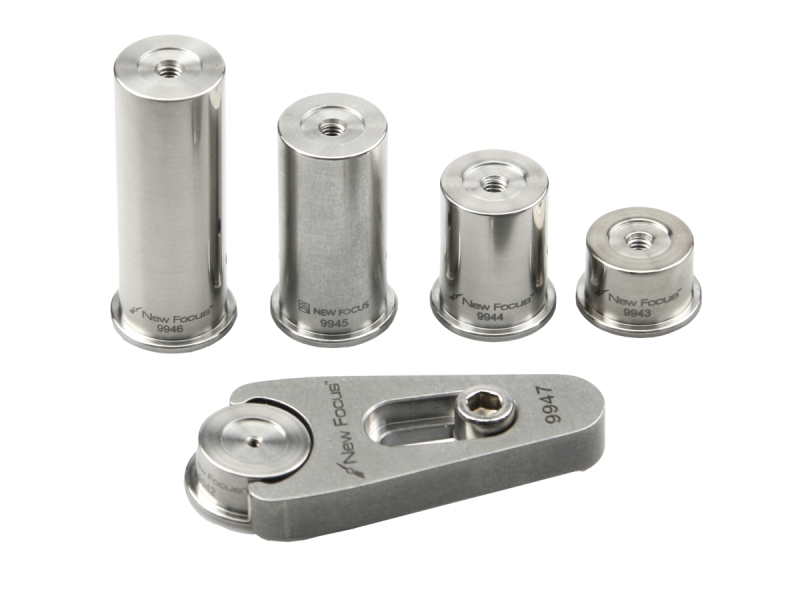
Pedestal optical post holders contain a magnetic base for simple table attachment and movement. Courtesy of Newport.
Optical Post Holders
Standard Post Holders
Optical post holders are essential in height adjustments. Most of these holders are comprised of aluminum and include a locking thumbscrew for easy and precise adjustments. Typical post holders are available in three main styles: standard, vacuum-compatible, and pedestal. The standard and vacuum-compatible models are- of course- best with their optical post counterparts. Pedestal post holders, however, are set apart by their magnetic base. This base renders the pedestal holder especially useful in different stages of alignment. Standard, vacuum-compatible, and pedestal post holders work with any base or clamping fork for customized use.
Specialty Post Holders
It is important to take advantage of different mounting methods to avoid crowded optical setups and make the most of the given space. Specialty post holders are extremely useful in optimizing mounted device setup. THORLABS close-approach post holders, for example, allow researchers to mount two posts in contact with each other. These are often used where space is limited, or when components must be placed close together for experimental reasons. Specialty post holders also include different translation methods to provide autonomous height adjustment.
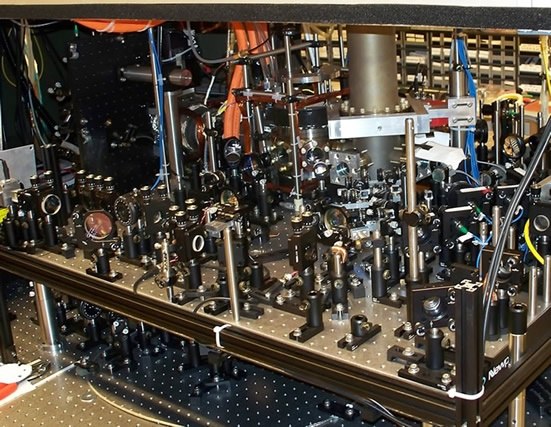
Every piece counts: considering the environment of your optical setup is key in choosing the correct optical holder. Courtesy of Quora.
What to Consider
Environment
Not every optical setup exists in the same environment. Different systems will be subject to different pressures, magnetic or electric fields, and available space. It is therefore important to customize the mounting system to the environment in which it stands. Knowledge of the environment helps determine the ideal material of a post or post holder. Aluminum posts, for example, are ideal in applications that benefit from lower reflection such as high-power lasing. Vacuum-compatible components are essential in loss-free transmission applications like fiber optics. When the designer has the correct optical holder, limited available space is not an issue.
Adjustability
Alignment and experimentation require a great amount of adjustments in every optical device within a setup. Different applications often require varying adjustability within the system. The pedestal holder provides a simple solution for both rough and fine laser alignment. The magnetic base allows users to tether devices to the table without an external base for quick and easy movement. Adding a clamping fork to the system provides 360 degree swivel capability to determine the most convenient mounting hole to lock the device to the table. Specialty post holders offer varying translation methods to fit the user’s preferences.
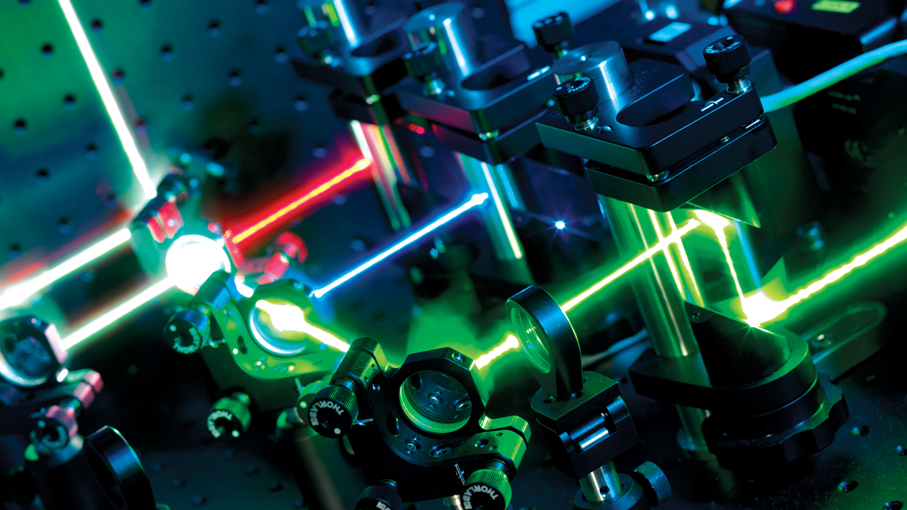
Stainless steel posts and standard aluminum holders will work for many applications, but not all. Courtesy of NPL.
Summary
There is an optical post and post holder for every application. Most systems only require the standard components: a stainless steel post and aluminum post holder with a single adjustable thumbscrew. These pieces provide a simple, cheaper, and sufficient method for mounting and adjusting most optical devices. Where space, external fields, or fine adjustability is a concern, however, it is best to turn to the specialty optical posts and post holders.
